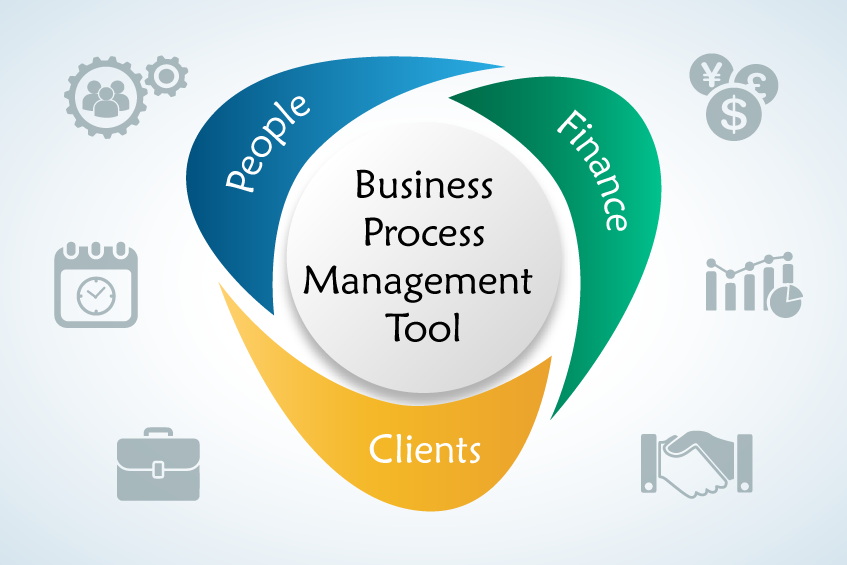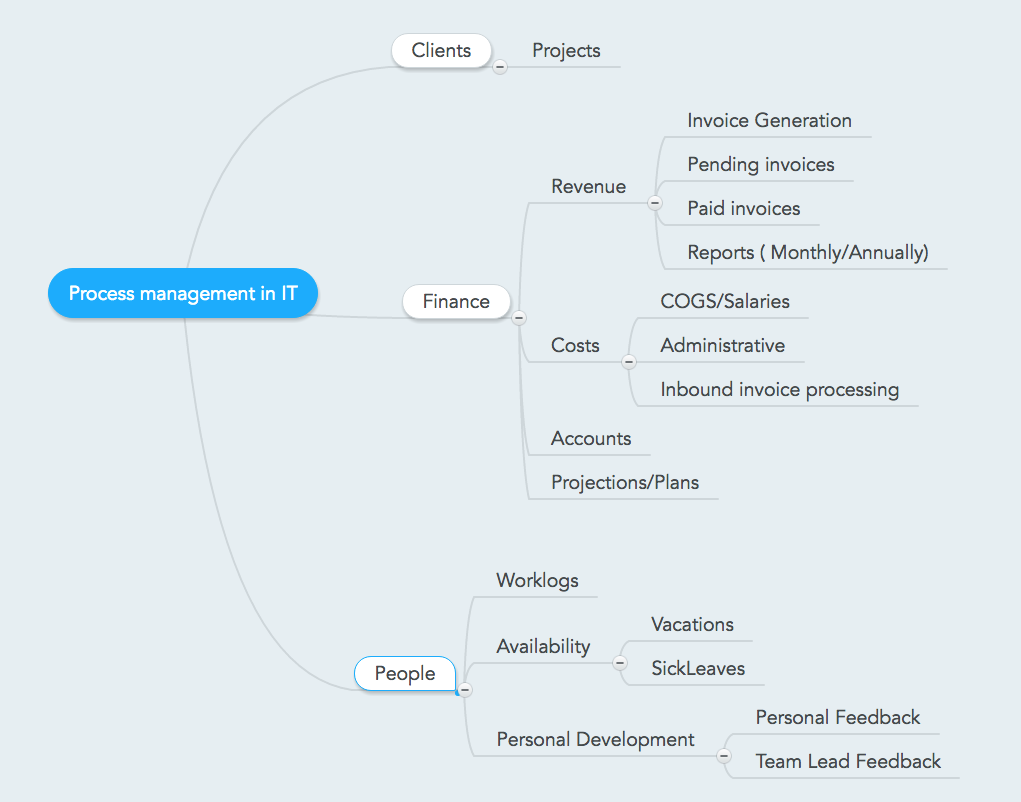All Articles
Business Process Management Tool for SME in IT: Luxury or Necessity
The secret’s revealed! Read how Rozdoum’s CEO manages to rule the company. He shares his invention history of a business process management tool. The analytics system deals with all CEO’s pains: time reports, invoices, project analysis, costs quotations, revenue and accounts monitoring, personnel management, and… Only those who read to the end will know.

In every business, no matter how big it is, there is a time when you need to find some firm ground, and define whether your path is leading you towards the future you really looking for. I am CEO of a software outsourcing company, and my story is about a creation of a business analytics tool with the help of Google Docs. Genius is simplicity, right?
What did the story begin with?
Long-long time ago, at the very beginning, there was a single spreadsheet containing information on my employees’ salaries. And that was enough to know what are my company expenses. The spreadsheet had existed for several years until we had one customer. As soon as the number of clients was increased, there came the necessity to send them invoices at least once a month, and the salary spreadsheet wasn’t the solution anymore.
I began searching the way to save my time and automate the invoicing process. Since time was reported in JIRA, I was looking for the solution that could deal with JIRA’s time reports, match time and an employee billing rate and export the data to an invoice. I don’t like reinventing the wheel until it is necessary — so I looked for invoicing solutions on the market. At that point, there were few platforms available and FreshBooks was one of them. It was a pretty nice match — Clients (Accounts), Time spent, rates more or less what is intended.
As laziness is a driving force of progress — we even invested in Freshbooks Connector for JIRA to automate the process. That worked in a way, unless the Ukrainian legislation, requiring Acceptance Report supplementing each Invoice, as well as translation of these documents to the Ukrainian language. Further, all the bundle should be certified by the seal and sent to authorities and the bank. So not much success in the path and despite the fact that I like Freshbooks a lot, I had to give up that approach as it was not able to handle the additional type of document and translations.
So, I used Google Docs again adding several tabs to gather data, generate Invoice and Reports, and their sealed translations. Google translation service was much help as well. We created a form, did a good translation once and the automation did the rest of work, we only filled the project names and spent hours manually.
Let’s list up the system functions on that stage:
- Gathering time reports
- Handling different clients with different rates
- Generating invoices and acceptance reports
- Providing invoice’s translations
- Overview of revenue streams.
Let’s proceed. As soon all the data and invoices were gathered in one place, we get statistics and analysis along: by clients, months, amount and so on. Next task was to divide my company expenses. I prefer dealing with salaries and substitute all other costs. That is how appeared two more documents with different access levels, and now I care about salaries and my accountant — about other costs.
Analysis of the total cash flow was the following challenge. Incomes were accumulated on several accounts, the costs were debited, and they match each other somehow. Moreover, we had to monitor different type financial account where money flow circulated as inbound and outbound movement. So account management was applied. Thus the system was enlarged with three more views:
- Cost of goods sold
- Administration expenses
- Account monitoring.
I had another great mind — to evaluate a project. And here pop up a huge amount of criteria that should be mentioned and estimated. Which project is more valuable, what is the project load, what are costs and incomes and so on. It corresponds with human resources management also: what if one expert is required for two full-time projects; how much is to cover sick leaves or vacations; how rate part-time or internal employment; what should you do to return investments on business supporting employees such as accountants, sales and marketing, and more. The another scale was customer oriented: what is our partnership history, working relationships, future business opportunities and even my attitude to a contact person.
As they say, necessity is the mother of invention. The set of criteria were defined for every project, and based on a weighted sum model I created a model that allowed to see a comparison of the projects and also make a prediction on further focus. It was hard to perceive the coefficient beyond exception, even when it grades the project you personally concerned about as not the most valuable one.
I can’t stop challenge my self-made business analysis system, so I compared my approach with others, decline several criteria and so on. Later the amazing story happened, once my system can provide a retrospective view, what if try to build a prospective line using the same approach. And it worked. Sure you should work on it, updating data and changes filling new information. Now I can match the plan for 2015 with the actual result, and see how precise and accurate it was.
Later I wanted to find out several more things:
- Discover each employee value (what revenue stream is generated vs. costs)
- Improve time monitoring system (several views to show total time on a project, selected employee workload, remaining project time, etc.)
- Get complete automation billing and invoice sending process (at this point I left myself the right to click on Send invoice button, but only for my self-motivation).
And once more, all these challenges were just one more views or tabs in the Google spreadsheets.
So, all in all, after 5 years of usage, I have the coverage of the following business processes:
- Time Report gathering from multiple sources
- External report for employees
- Internal reports for client / Project load for person / Project monthly / Daily reports
- Vacation / Sick days tracking
- Invoice Generation
- Individual rates for each person based on customer project
- Billable / Nonbillable projects
- Manual adjustment before generation
- Adjustable template invoice
- Revenue Report
- Customer based reports
- Invoice status
- Due reports
- Monthly / Quarter bases / Annual reports
- Cost structure
- COGS (Dev salaries + bonus system affected by vacation / Sick days tracking)
- Admin costs
- Project costs
- Customer acquisition costs / Sales costs
- Subcontractors tracking / Invoicing
- Accounts Balance
- Integration with revenue stream / Invoice received
- Integration with cost stream
- Overall Analysis
- Financial reporting Monthly / Quarterly / Annual
- Revenue / To be paid invoices
- Project-based Analysis
- Personnel Management
- Personal feedback
- Team lead feedback
- Salary track history corresponding with personal and team leads’ feedbacks
- Effectiveness
- Sales team management.
 Finally, you may ask why not use one of the ready solutions. And you will be right unless my decision to refuse FreshBooks and start to build my personal system in 2010 became the line in the sand, leaving no chance to turn back. The existing system meets my requirements, it is a bit slow working, for it is built on Google spreadsheets where one piece of data is given here and is imported to there, and it is dependable and stable.
Finally, you may ask why not use one of the ready solutions. And you will be right unless my decision to refuse FreshBooks and start to build my personal system in 2010 became the line in the sand, leaving no chance to turn back. The existing system meets my requirements, it is a bit slow working, for it is built on Google spreadsheets where one piece of data is given here and is imported to there, and it is dependable and stable.
The main point is that I have all metrics and analysis I need, they do not require brain-taxing work from me, so now I have two questions that keep me wondering.
First. Am I the only one who needed that or are there others who had to solve same problems and address similar challenges? Please help me out by taking this short survey.
Second. Is this know-how worth creating a product?
Should you have some ideas to share, interested in a demo or possible use — drop me a note.

Stay on Top of the Latest IT Software Development Tips, Newest Offshore Trends, and Best Outsourcing Practices.



